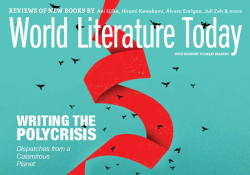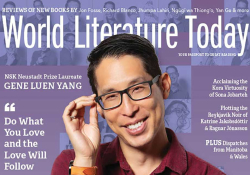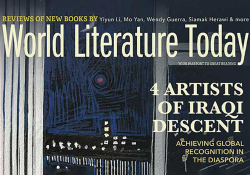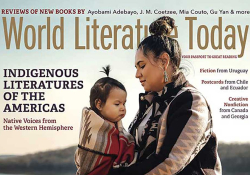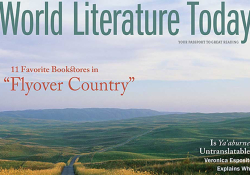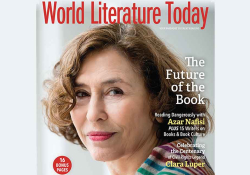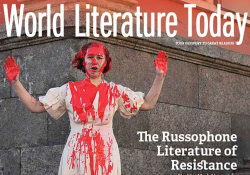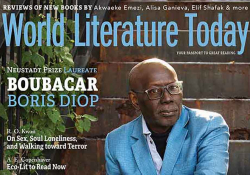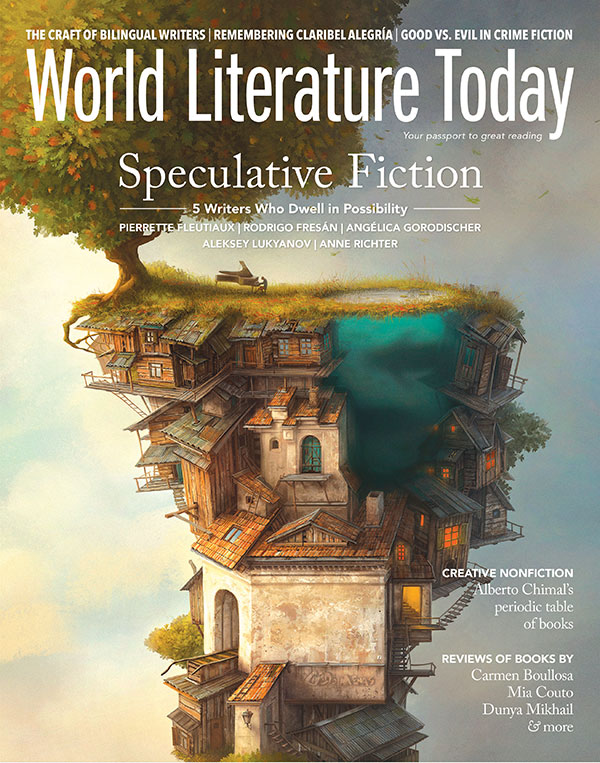Editor’s Note
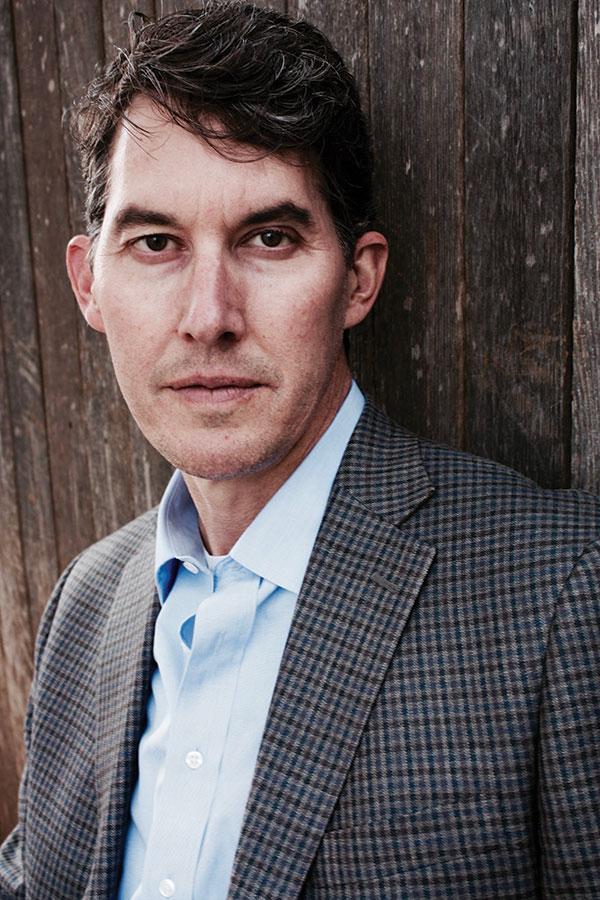 Not only is World Literature Today one of the oldest continuously published magazines devoted to international literature, but a remarkable continuity has prevailed on our masthead page in the past couple of decades. Dr. RC Davis-Undiano will soon celebrate twenty years as WLT’s executive director in what I like to characterize as a third golden age in the magazine’s history, following the tenures of our founding editor (1927–49), Roy Temple House, and our longtime editor (1967–91) Ivar Ivask. Moreover, as of 2018, I’ll become the third longest-serving editor in chief (2008–18) in the publication’s history, following House and Ivask. Standing on the shoulders of such giants, we feel fortunate to survey the horizons of the international literary scene from the Southern Plains of Oklahoma, a place that has always been a crossroads of languages, cultures, and the imagination.
Not only is World Literature Today one of the oldest continuously published magazines devoted to international literature, but a remarkable continuity has prevailed on our masthead page in the past couple of decades. Dr. RC Davis-Undiano will soon celebrate twenty years as WLT’s executive director in what I like to characterize as a third golden age in the magazine’s history, following the tenures of our founding editor (1927–49), Roy Temple House, and our longtime editor (1967–91) Ivar Ivask. Moreover, as of 2018, I’ll become the third longest-serving editor in chief (2008–18) in the publication’s history, following House and Ivask. Standing on the shoulders of such giants, we feel fortunate to survey the horizons of the international literary scene from the Southern Plains of Oklahoma, a place that has always been a crossroads of languages, cultures, and the imagination.
Mindful of the continuity of our history here, I’m also pleased to announce four new staffing changes for 2018: Michelle Johnson, who has served as WLT’s gifted managing editor since 2008, is adding “culture editor” to her title—Michelle is already developing a music-themed cover feature for the September issue. Also of note, Jen Rickard Blair, previously our online editor and web developer, took over as WLT’s art director as of the March issue—readers will appreciate her sophisticated design aesthetic throughout the current issue. Rob Vollmar, while continuing to serve as our polymath book review editor, has also assumed Jen’s former online editing role. And we’re delighted to welcome Cassady Dixon as our new full-time colleague in marketing, public relations, and social media. Behind the scenes but no less vital to our presence on campus, Terri Stubblefield will consolidate her role as office manager in charge of programs, event planning, and development, and Kay Blunck continues to keep the WLT ship afloat by managing our subscriptions and accounts.
What remains unchanged is the unwavering support of the University of Oklahoma in providing WLT with both an operational base and an intellectual home. Speaking of golden ages, we salute OU’s longtime president, David L. Boren, upon his retirement this year and thank him for his generous support of the arts and humanities, and WLT in particular, during his tenure. We also thank Dr. Kyle Harper, OU’s senior vice president and provost, for his deep and passionate investment in fostering our continued excellence. In October 1926, when Dr. House initially approached President William Bennett Bizzell to request a startup budget of $150 for the first two issues of the quarterly that eventually became WLT, his rationale was strikingly modest: “I know our little magazine will be useful in various quarters. A good many of us, I think, are coming to feel strongly that the University of Oklahoma must begin fostering contributions to the scholarly and cultural activities of the nation.” That utilitarian emphasis remains at the core of our mission, even as the university’s scholarly and cultural activities have expanded beyond the state and region to become not only national but international in scope.
As I wrote in a previous issue, “To the students in my magazine publishing class, I often cite Michael Robert Evans’s assertion that ‘editing is primarily about people,’ not words. By extension, universities are less about buildings and the spaces—geographical or intellectual—they occupy than about the people who inhabit and enliven them” (May 2015). While a JSTOR keyword search might provide a “big data” view of world literature as cataloged in our pages since 1927, most readers who pick up a book are looking for deep immersion in the unique time and place of that writer’s world. Words always reflect back upon the multiverse at large—we read such literature to be enlightened and inspired, even within the spatial and temporal circumscriptions of our horizons.
Daniel Simon
